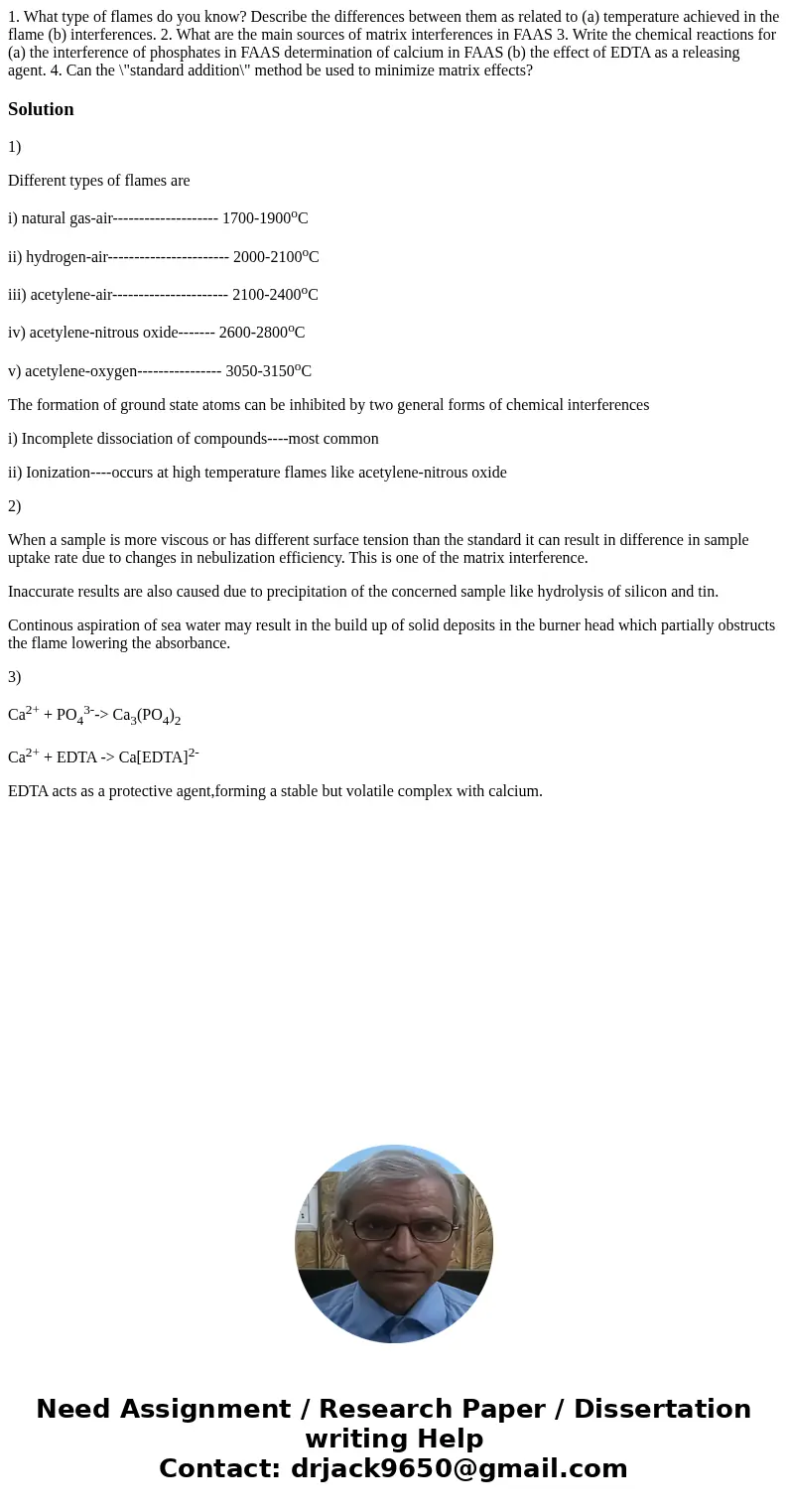1 What type of flames do you know Describe the differences b
Solution
1)
Different types of flames are
i) natural gas-air-------------------- 1700-1900oC
ii) hydrogen-air----------------------- 2000-2100oC
iii) acetylene-air---------------------- 2100-2400oC
iv) acetylene-nitrous oxide------- 2600-2800oC
v) acetylene-oxygen---------------- 3050-3150oC
The formation of ground state atoms can be inhibited by two general forms of chemical interferences
i) Incomplete dissociation of compounds----most common
ii) Ionization----occurs at high temperature flames like acetylene-nitrous oxide
2)
When a sample is more viscous or has different surface tension than the standard it can result in difference in sample uptake rate due to changes in nebulization efficiency. This is one of the matrix interference.
Inaccurate results are also caused due to precipitation of the concerned sample like hydrolysis of silicon and tin.
Continous aspiration of sea water may result in the build up of solid deposits in the burner head which partially obstructs the flame lowering the absorbance.
3)
Ca2+ + PO43--> Ca3(PO4)2
Ca2+ + EDTA -> Ca[EDTA]2-
EDTA acts as a protective agent,forming a stable but volatile complex with calcium.

 Homework Sourse
Homework Sourse